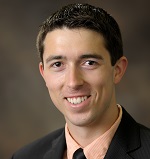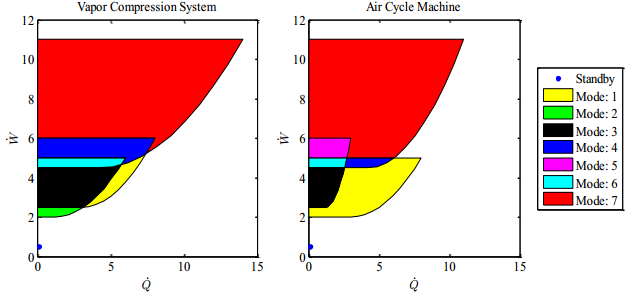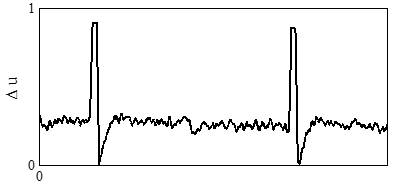
- Curriculum Vitae

- mwillms4@illinois.edu
- Ph.D. Candidate in Mechanical Engineering – University of Illinois
- M.S. Mechanical Engineering – University of Illinois (August 2014)
- B.S. Aerospace Engineering – University of Kansas (May 2012)
- Research Interests: Dynamic modeling, Optimization, Model predictive control, Hybrid systems, Aircraft electrical-thermal systems
This research is sponsored by the National Science Foundation (NSF) Graduate Research Fellowship Program (GRFP) and the National Science Foundation Engineering Research Center for Power Optimization of Electro-Thermal Systems (POETS) agreement EEC-1449548.
Current Work
Control and Optimization of Electro-Thermal Systems
Current and next generation fighters, as well as commercial aircraft, are increasingly becoming complex interconnected systems that span multiple energy domains. These dynamic interactions have the potential to reduce overall system efficiency and lead to system failures, e.g. Boeing 787 battery issues. Through the use of model-based strategies, this physical coupling can be better understood and utilized in decision making algorithms.
My current research focuses on the development of a hierarchical control architecture that manages energy production, storage, and consumption at the vehicle, system, subsystem, and component levels of an aircraft. Through the use of model-based strategies, exploitation of system architecture, and prediction of system loads and disturbances, we hope that our developed control and optimization strategy is capable of doubling the power density of these systems without altering the system architecture.
Preliminary work on the problem includes the development of the hierarchical control structure, as shown in the figure below. At each level, the respective controller is responsible for different parts of the aircraft, communication up/down the hierarchy, and operating on a time scale that can range from minutes to milliseconds.

Fig. 1. Hierarchical control structure
Initial controller development looked at the thermal management system (system level) and the vapor compression system (VCS) and air-cycle machine (ACM), both of which exist in the subsystem level. For the system level control a model-predictive controller was developed with the goal of regulating temperatures in thermal zones (e.g. fuel tank, cockpit). At the subsystem level a mixed integer quadratic problem (MIQP) was responsible for determining continuous and discrete states of operation for the VCS and ACM. The discrete states correspond to the operational mode of the VCS and ACM, as represented in Fig. 2, while the continuous variables allow the controller to move around in a specific mode. In each mode the trade off between resource delivered (cooling capacity – Q̇) and resource consumed (power – Ẇ) is determined using the continuous states.

Fig. 2. Operating regions and performance curves for the VCS and ACM
Preliminary results showed the ability to reduce power consumption by 10% while maintaining the same level of performance as a baseline control strategy. Improvements were the result of utilizing predictions of upcoming loads to make control decisions and mode switching to balance performance of the VCS and ACM. Power consumption was further reduced when temperatures were only restricted to remain within some bounds, and not regulated to a set point.
Full details of the development, analysis, and results can be found in my masters thesis.
Previous Work
Dynamic Modeling of Electro-Thermal Aircraft Systems
Since aircraft development is a multi-billion dollar investment, it is currently unfeasible to develop aircraft platforms simply for testing the interaction of subsystems. The preferred alternative is to develop physics-based dynamic models that will allow for design and analysis of subsystems in simulation.
Currently, stand-alone subsystems tend to operate very efficiently; however, this does not mean that an interconnected system of optimized subsystems will lead to global optimal system operation. Therefore, understanding the integration of the systems is vitally important to further improvements and improved efficiency. Furthermore, with alternative fuels and aircraft electronics becoming more prevalent, it is important to understand the correlation between subsystems and power production/consumption.
My earlier research sought to improve the characterization of these systems through the development of large scale dynamic models to be used for the simulation of an aircraft over a range of mission profiles.
Variable Fidelity Dynamical Modeling
Engineering system design, in many different fields, relies heavily on modeling and simulation to reduce development time and improve the performance of final products. As these models improve in fidelity and become more detailed and complex, the computational time required to simulate the operation of these systems increases. Highly accurate models are typically developed for individual subsystems, but at the system level fidelity is often traded for decreased computational cost. This work focused on the development of an algorithm that would intelligently switch the level of fidelity in a model during a simulation in an attempt to preserve the accuracy of high fidelity models, while reducing the computational cost.
We found that when our systems were subjected to transient exogenous signals (controller inputs or disturbances) we would see the largest discrepancy between our low and high fidelity models. But when these models were at steady state, the high and low fidelity models were nearly identical. Using a preview of these exogenous signals, we developed supervisory logic that would sample the signals and determine when to switch between high and low fidelity models. By tuning the parameters of this logic we were capable of increasing the computational speed by 56% and maintaining the accuracy of the high fidelity models.
Follow-up work focused on the effect of high/low fidelity models on controller inputs. Ideally a dynamic system model should closely match the real model, so that development of controllers in simulation would be easily applicable to the real system without the need for iterating between the real system and simulation. Taking a standard four component vapor compression system (VCS), we looked at how the same controller responded when simulated with high and low fidelity component models. The result was a significant difference is controller behavior, not only at steady state, but during transient events too represented by the spikes in Fig. 3.

Fig. 3. Normalized input error between high and low fidelity model
Using the switched fidelity procedure, we looked at how the switched model performed compared to the high and low fidelity models when it came to predicting controller inputs, which for the VCS was the compressor speed and valve opening. The result was an almost identical match between the high and switched fidelity models (Fig. 4). The additional benefit was that the switched fidelity model was nearly 35% faster than the high fidelity model.

Selected Publications
Koeln, J. P., Williams, M. A., Alleyne, A. G., “Hierarchical Control of Multi-Domain Power Flow in Mobile Systems – Part I: Framework Development and Demonstration,” Proc. of the 8th ASME Dynamic Systems and Control Conference, Columbus, OH, USA, 2015. (PDF)
Williams, M. A., Koeln, J. P., Alleyne, A. G., “Hierarchical Control of Multi-Domain Power Flow in Mobile Systems – Part II: Aircraft Application,” Proc. of the 8th ASME Dynamic Systems and Control Conference, Columbus, OH, USA, 2015. (PDF)
Williams, M., Sridharan, S., Banerjee, S., Mak, C., Pauga, C., Krein, P., Alleyne, A., Jacobi, A., D’Urso, S., “PowerFlow: a Toolbox for Modeling and Simulation of Aircraft Systems,” SAE AeroTech 2015, Seattle, WA, USA, 2015. (PDF)
M. A. Williams, “A Hierarchical Control Strategy for Aircraft Thermal Systems,” M.S. Thesis, Dept. Mech. Eng., Univ. Illinois Urbana-Champaign, Urbana, IL., 2014. (PDF)
M. A. Williams and A. G. Alleyne, “Variable Fidelity Modeling in Closed Loop Dynamical Systems,” Proc. of the 7th ASME Dynamic Systems and Control Conference, 2014. (PDF)
M. A. Williams and A. G. Alleyne, “Switched-Fidelity Modeling and Optimization for Multi-Physics Dynamical Systems,” Proc. of the 2014 American Control Conference, 2014. (PDF)